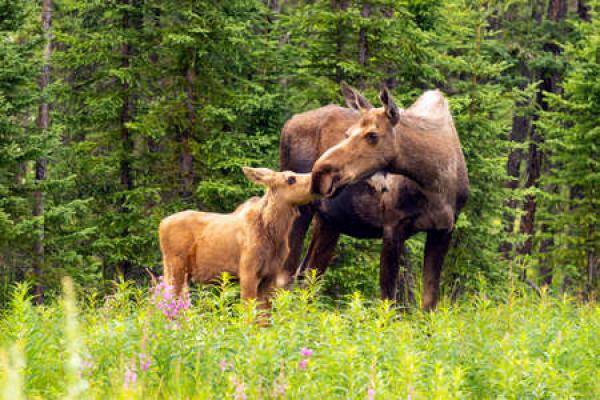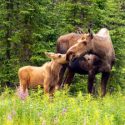 If you’re going moose hunting for the first time, you’re in for quite the experience. Although they are part of the deer family, moose are categorized in the same manner as cows. Adult males are bulls, adult females are cows and moose less than one year old are calves.
If you’re going moose hunting for the first time, you’re in for quite the experience. Although they are part of the deer family, moose are categorized in the same manner as cows. Adult males are bulls, adult females are cows and moose less than one year old are calves.
Being able to tell the difference between the three will come in handy if you’re hunting anywhere in Ontario, especially at an outfitter. You’ll only be allowed to harvest the type of moose you have a tag for. There is a cost difference among the tags so it’s important to know ahead of time what kind of animal you’re looking for. Here’s how you can tell them apart:
Bulls
The most obvious sign that you’re dealing with an adult male moose is the presence of antlers. Cows and calves do not have them. They’ll be tough to miss as they can grow up to two meters wide and can weigh up to 30 kilograms. Bulls begin to grow their antlers in the early spring and shed them in winter. If you happen to be hunting in the winter, you’ll notice there are two scars on either side of the bull’s head, above the eyes where the antlers will soon begin to form again.
Cows
In addition to not having antlers, cows are not quite as large as bulls. An adult male moose can weight anywhere from 1,200 to 1,600 pounds and can grow up to seven feet tall. Adult females will only get up to the 800-to-1,200-pound range. Cows are still an imposing figure, but not quite as large as bulls. Additionally, if you’re tracking your prey, you may notice a difference in footsteps. Due to moose anatomy related to birthing, the footprints from their back hooves tend to be wider than the front.
Calves
You can easily tell the difference between calves and adult moose when they’re very young due to their diminutive stature. But as they get closer to one year of age, males especially will grow close enough in size to cows that it will become difficult to tell them apart with the naked eye. You’ll have to look for other distinguishing characteristics such as the fact that they’re rarely alone. They also tend to have a lower shoulder height, a smaller nose, a shorter face and will have disproportionately long legs for their body.
Knowing the difference between male, female and baby moose will ensure a successful hunt. But if you’re looking for the perfect moose hunt in Ontario this year, look no further than Mattice Lake Outfitters. We can accommodate a group or a single traveler to hunt our plentiful herds in scenic Northwestern Ontario. Contact us to learn more.
